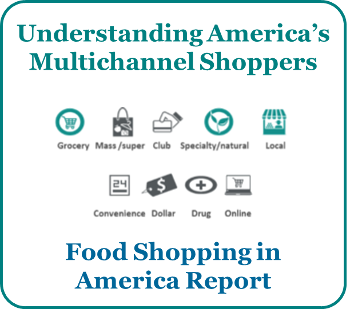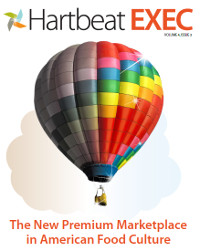Walmart, Dollar Stores and Specialty Natural Stores: Different Channels, Same Shopper?

Shoppers today are a fickle bunch, or at least it would seem so if you follow them around like we do and observe that on any given day they shop mass discounters, club stores, grocery stores, dollar stores or natural/specialty stores and, of course, not to be forgotten, the Internet as well. As we've said before, with "food everywhere," the world of foods and beverages (and all stores selling them) is the proverbial oyster for today's shopper.
And yet, when it comes to the seemingly divergent experiences offered by "upmarket" retailers (like natural/specialty formats) compared to those offered by downmarket discounters, we wonder if it's possible that some shoppers could actually value upmarket and downmarket/EDLP (Everyday Low Price) retailers equally, but for different things. If so, what does this mean for food and beverage marketers today? And what does it mean for marketers of emerging premium brands?
Let’s start with the crucial missing fact: in any given month, 41 percent of American shoppers shop at BOTH a natural/specialty retailer AND either supercenter (e.g., Walmart) or dollar stores.[1] Think about it: each month, 4 in 10 consumers shop way up- AND way downmarket. This paradox in shopping orientation is not new at all to American food culture but continues to go underestimated by many analysts.
Our ethnographic research suggests that this phenomenon has a few key drivers:
 As natural/organic packaged foods gained broader and broader distribution in conventional outlets (even into some C-stores), steady/heavy users with middle to lower incomes discovered they could save significant amounts of money on items like soy milk or organic milk they consume frequently. Most of the established $250M+ premium brands we track are available at Walmart at lower prices than natural/specialty retailers (e.g., Silk, Horizon, Kind, Naked).
As natural/organic packaged foods gained broader and broader distribution in conventional outlets (even into some C-stores), steady/heavy users with middle to lower incomes discovered they could save significant amounts of money on items like soy milk or organic milk they consume frequently. Most of the established $250M+ premium brands we track are available at Walmart at lower prices than natural/specialty retailers (e.g., Silk, Horizon, Kind, Naked).- Upmarket retailers continue to attract a very broad swath of America because of one thing: the amazingly high-quality fresh food they sell on their store perimeters. Fresh is the quality pillar with the broadest household resonance in America. We have yet to meet a consumer who walks into Whole Foods Market and is not amazed at the mere sight of the meat counter, the produce department and the bakery. They can’t find anything like it at their neighborhood grocer. This continues to draw even low-income shoppers into these stores for carefully selected, often special event-related, trade-up purchasing.
The biggest concern this raises for the industry is related to how early-stage premium brands should think about paths to scale.
If 41 percent of shoppers are cross-shopping retail quality tiers to this degree, what are the consequences of distributing a young, sensitive premium brand too early to Walmart?
With millions of American shoppers already used to looking for price discounts on premium brands at EDLP or downmarket channels, it is reasonable to assume that whenever they discover something new at Whole Foods Market they will keep their eyes out for it at Walmart to snag it at a lower price.
Feeding this behavior, however, will hasten the collapse of your premium brand’s margins at the expense of chasing quick volume. You will also hasten the collapse of its special, ‘cool’ halo, which is sustained by making its purchase the result of an intentional hunt.
We believe that those who are scaling early-stage brands should avoid downmarket retailers until they can no longer gain organic growth by other means in upmarket and midmarket points of distribution.This is counterintuitive advice for today’s line managers, but it is crucial to maximizing the strength of your brand and the return on investment for these businesses.
More about upmarket/downmarket: Hartbeat Exec
[1] Source: Food Shopping in America 2014 report, The Hartman Group

